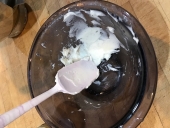

 ), because around here...and my dairy farming family especially permaculture is still an idea on the fringes of acceptability.
), because around here...and my dairy farming family especially permaculture is still an idea on the fringes of acceptability.Tereza Okava wrote:we use clove for insect repellant (soak lots of cloves in alcohol for a month or so and spray on. strain and add a bit of mineral or veg oil if you're worried about skin irritation.) for working in the garden and for visitors-- we throw a lot of parties on our back porch in the garden and guests often have children and don't want to use commercial insect repellant. It works well for about 2 hours before you have to reapply. It stains clothing though, I wonder if there is some way to use clove essential oil for the same purpose.

Thekla McDaniels wrote:here is a link that I found through new england cheese making newsletter:
http://blog.cheesemaking.com/using-that-leftover-whey/
Thought it might be a useful link for folks viewing this thread
 cool to see it's already here!
cool to see it's already here!





